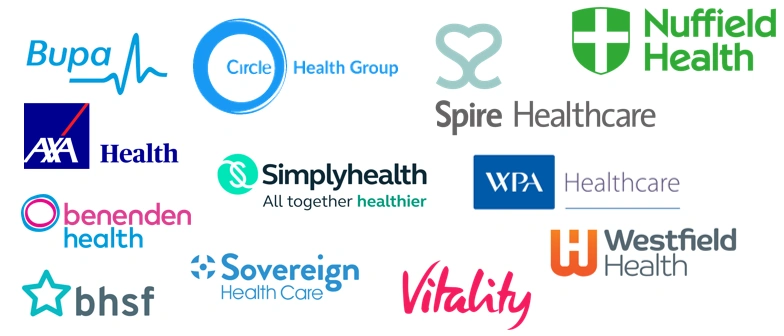Health insurance company USA provides coverage for medical expenses, including doctor visits, hospital stays, and prescriptions. Top providers like UnitedHealthcare, Blue Cross Blue Shield, Aetna, Cigna, and Kaiser Permanente offer various plans for individuals, families, and employers to ensure affordable, quality healthcare and financial protection against unexpected medical costs.
Health insurance in the USA is more than just a policy; it’s peace of mind. With healthcare costs skyrocketing, having proper coverage ensures you don’t drown in medical bills after a hospital visit or emergency. The American healthcare system is complex, with multiple providers, plans, and pricing models that can confuse even the most financially savvy person. Understanding the fundamentals of how it works is the first step to finding the right plan that fits your lifestyle and budget.
The U.S. doesn’t have universal healthcare like many other countries. Instead, it operates on a mixed system private and public insurers play different roles in providing coverage. Whether through your employer, a government program like Medicare or Medicaid, or a private company, insurance acts as a financial safety net. It covers everything from regular checkups and prescription drugs to major surgeries and specialist consultations.
Over the years, the American health insurance market has evolved dramatically. With the introduction of the Affordable Care Act (ACA), millions more gained access to coverage. Still, understanding premiums, deductibles, copayments, and out-of-pocket limits can be overwhelming. This article will break down the system, compare the top insurance companies, and help you make smarter decisions for your health and wallet.
List of Top Health Insurance Companies in the USA
1. Kaiser Permanente
Kaiser Permanente is one of the largest nonprofit health insurance providers in the USA, known for its integrated care model. It operates hospitals, medical offices, and health plans, offering comprehensive coverage, preventive care, and digital health services for individuals, families, and employers across multiple U.S. states.
2. Aetna
Aetna, a CVS Health company, offers health insurance plans for individuals, families, and businesses. It provides medical, dental, and vision coverage, along with Medicare and Medicaid services. Aetna focuses on affordable healthcare, preventive wellness programs, and digital tools to help members manage their health efficiently.
3. CareSource
CareSource is a nonprofit health insurance company that primarily serves Medicaid, Marketplace, and Medicare members. Headquartered in Ohio, it focuses on providing affordable coverage, preventive care, and community health programs. CareSource is known for supporting low-income families and improving access to quality healthcare across several U.S. states.
4. Cigna
Cigna is a global health insurance leader offering medical, dental, pharmacy, and behavioral health plans. It provides individual, employer, and Medicare coverage focused on wellness, affordability, and access to a broad healthcare network. Cigna’s mission is to improve health, well-being, and peace of mind for every customer it serves.
5. Centene Corporation
Centene Corporation is a leading healthcare enterprise specializing in government-sponsored programs like Medicaid, Medicare, and Marketplace plans. It serves millions of members nationwide, focusing on affordable, high-quality care for underinsured and low-income individuals. Centene partners with local providers to improve community health and patient outcomes.
6. UnitedHealthcare
UnitedHealthcare, part of UnitedHealth Group, is the largest health insurance company in the USA. It offers individual, employer, Medicare, and Medicaid plans with extensive provider networks and digital health tools. UnitedHealthcare emphasizes preventive care, affordability, and wellness programs to help Americans live healthier, more secure lives.
7. Elevance Health
Elevance Health, formerly Anthem, is one of the nation’s leading health benefits companies. It operates Blue Cross Blue Shield plans in several states and offers coverage for individuals, families, and businesses. Elevance focuses on personalized healthcare solutions, digital innovation, and improving community health outcomes across the U.S.
8. Humana
Humana specializes in health insurance and Medicare Advantage plans, serving millions of Americans. It offers medical, dental, and vision coverage along with wellness programs. Humana focuses on preventive care, healthy living, and digital health management to help members lead active, balanced lives.
9. Independence Health Group, Inc.
Independence Health Group, the parent company of Independence Blue Cross, serves millions across Pennsylvania and beyond. It offers health, dental, vision, and Medicare plans. The company emphasizes innovation, affordability, and community wellness through partnerships with hospitals and healthcare providers.
10. American Strategic Insurance (ASI)
American Strategic Insurance, part of Progressive Insurance, primarily offers property and casualty insurance but has expanded into healthcare partnerships. Known for reliability and strong customer service, ASI provides protection plans that complement health coverage by helping customers manage financial risks and unexpected events.
11. CVS Health
CVS Health is a healthcare powerhouse that integrates pharmacy, retail, and insurance services. Through Aetna, it offers health, dental, and vision coverage nationwide. CVS Health focuses on accessible care, wellness programs, and digital health solutions through its retail clinics, pharmacies, and virtual care options.
12. HCSC (Health Care Service Corporation)
HCSC is the largest customer-owned health insurer in the U.S., operating Blue Cross Blue Shield plans in multiple states. It provides individual, group, and Medicare coverage with a focus on affordability, innovation, and wellness. HCSC emphasizes local partnerships and community-driven healthcare improvements.
Why Health Insurance is Essential

Why should anyone bother with health insurance? The answer is simple: medical care in the USA is expensive. Without insurance, even a simple emergency room visit can cost thousands. A broken leg could cost more than $7,500, and hospital stays can quickly climb above $30,000. Health insurance cushions these expenses by sharing the financial risk between you and the insurer.
Beyond just cost savings, insurance ensures access to quality care. Insurers often have networks of approved hospitals and doctors, meaning you’ll receive timely and efficient services. Many plans also include preventive care vaccinations, annual checkups, and screenings, which help detect potential health issues early before they become major problems.
Think of insurance as a safety net for your future. Accidents, chronic diseases, or sudden illnesses can happen to anyone. With coverage, you’re not forced to choose between your health and your financial stability. Plus, many insurers now offer wellness programs, discounts on gym memberships, and telehealth options to encourage healthier lifestyles.
Health insurance isn’t just about being prepared; it’s about taking control. It helps protect your body, your bank account, and your peace of mind. Whether you’re self-employed, a student, or a retiree, having a solid plan ensures you can focus on living rather than worrying about unexpected bills.
Overview of the U.S. Health Insurance System

The U.S. health insurance system is one of the most complex in the world, blending private and public options into a massive network of coverage providers. Unlike countries that offer universal healthcare, the American model relies on a combination of government-funded programs and private insurance companies. This setup gives consumers flexibility but also creates confusion due to varying terms, costs, and coverage levels.
The system operates primarily through four channels: employer-based insurance, individual plans, government programs, and group health markets. The majority of Americans (over 50%) receive coverage through their employers. Government programs like Medicare and Medicaid cover specific groups of seniors, low-income families, and people with disabilities. The rest rely on private insurers or the ACA marketplace to purchase individual policies.
Regulation also varies by state, which means the same insurer might offer different plans or rates depending on where you live. The federal government plays a supervisory role through the Department of Health and Human Services (HHS) and the Centers for Medicare & Medicaid Services (CMS), ensuring compliance and consumer protection.
Although the U.S. system often faces criticism for being expensive and fragmented, it also provides a wide range of options and innovations, such as telemedicine and digital health records. The key to navigating this system effectively is understanding your own needs, comparing plans carefully, and knowing your rights as a policyholder.
Types of Health Insurance Plans
Understanding the types of health insurance plans in the USA is the key to finding one that fits your lifestyle and medical needs. Every plan type has its own set of rules for where you can get care, how much you’ll pay, and what’s covered. Choosing wisely could save you thousands annually while ensuring you get quality healthcare when you need it most.
Private Health Insurance
Private health insurance is purchased directly from insurance companies or through your employer. It’s the most common form of coverage in the U.S. and comes in several plan formats: HMO, PPO, EPO, and POS.
-
HMO (Health Maintenance Organization) plans require you to choose a primary care physician (PCP) and get referrals to see specialists. They’re usually more affordable but come with limited provider networks.
-
PPO (Preferred Provider Organization) plans offer more flexibility. You can see any doctor you like, even outside your network, though you’ll pay more for out-of-network visits.
-
EPO (Exclusive Provider Organization) plans combine the cost savings of HMOs with the flexibility of PPOs, but generally, you must use network providers except in emergencies.
-
POS (Point of Service) plans are a hybrid of HMO and PPO structures. They require referrals for specialists but allow some out-of-network coverage.
Private health plans also vary in coverage; some are comprehensive, covering everything from prescriptions to maternity care, while others are high-deductible plans paired with Health Savings Accounts (HSAs).
Public Health Insurance
Public health insurance refers to government-funded programs like Medicare, Medicaid, CHIP (Children’s Health Insurance Program), and Veterans Health Administration coverage.
-
Medicare serves people aged 65 or older and certain younger individuals with disabilities.
-
Medicaid is designed for low-income individuals and families, providing free or low-cost care.
-
CHIP offers health insurance for children in families that earn too much to qualify for Medicaid but can’t afford private insurance.
Public insurance plays a crucial role in filling the gaps left by private coverage, ensuring that vulnerable populations aren’t left without medical support.
Major Health Insurance Companies in the USA

The American health insurance market is dominated by a few major players, each offering a wide range of plans tailored to different demographics and states. Knowing the top providers helps you understand your options better and compare their strengths.
1. UnitedHealth Group
UnitedHealth Group is the largest health insurance company in the U.S., serving millions through its UnitedHealthcare brand. It’s known for its vast provider network, excellent online tools, and comprehensive wellness programs. Their plans often include benefits like telehealth services, gym memberships, and chronic condition management.
2. Anthem Blue Cross Blue Shield
Anthem operates under the Blue Cross Blue Shield Association in many states. They provide both individual and employer-based plans and have a reputation for strong customer service. Anthem focuses on preventive care and digital health innovations, offering members access to virtual visits and health tracking apps.
3. Aetna
Aetna, now part of CVS Health, combines traditional health insurance with pharmacy and wellness services. Their plans are ideal for people who want integrated care and easy access to prescription management. Aetna is also known for its Medicare Advantage plans, which provide additional benefits beyond standard Medicare.
4. Cigna
Cigna offers global and domestic health insurance coverage, making it a great choice for frequent travelers or international workers. Their plans focus heavily on mental health support, preventive care, and digital convenience. Cigna also provides 24/7 virtual doctor consultations, a major plus for busy professionals.
5. Humana
Humana is especially popular among seniors due to its Medicare Advantage and supplemental plans. They also provide employer-based and individual coverage options. Humana stands out for its emphasis on wellness incentives, fitness programs, and holistic health care, including dental and vision benefits.
How to Choose the Right Health Insurance Company
Choosing the right health insurance company can feel like searching for a needle in a haystack. There are countless options, each promising “the best coverage.” But the truth is, the best plan for one person may not work for another. The key is to focus on your individual needs, health history, and budget.
Here’s a step-by-step way to make your decision easier:
-
Evaluate Your Health Needs: Consider how often you visit doctors, need prescriptions, or have ongoing medical conditions.
-
Check Provider Networks: If you have preferred doctors or hospitals, ensure they’re covered under your potential insurer’s network.
-
Compare Plan Types: Decide whether you need flexibility (PPO) or prefer affordability (HMO).
-
Look at Total Costs: Don’t just focus on premiums. Add up deductibles, copays, and out-of-pocket maximums.
-
Review Customer Service Ratings: Use reviews and satisfaction surveys to gauge how well companies handle claims and provide support.
-
Explore Additional Perks: Some insurers offer wellness programs, free telehealth visits, or rewards for healthy habits.
Health Insurance Premiums and Deductibles
When it comes to health insurance, two words confuse most people: premiums and deductibles. Understanding these terms can help you avoid financial surprises.
-
Premiums are the monthly payments you make to keep your insurance active. Even if you don’t visit a doctor, this cost remains.
-
Deductibles are what you must pay out-of-pocket before your insurance starts covering expenses.
For example, if you have a $1,000 deductible and your medical bill is $2,000, you’ll pay the first $1,000, and your insurer will cover the rest (depending on your plan).
There’s also the out-of-pocket maximum, the total amount you’ll pay in a year before insurance covers 100% of eligible costs.
The trade-off is simple:
-
Lower premiums usually mean higher deductibles.
-
Higher premiums often come with lower deductibles.
So, which is better? It depends on your health habits. If you’re generally healthy and don’t need frequent care, a low-premium, high-deductible plan might be smart. But if you visit the doctor often or take regular prescriptions, a higher premium with lower out-of-pocket costs could save you money long term.
Employer-Sponsored Health Insurance Plans
Employer-sponsored health insurance remains the cornerstone of coverage for most Americans. Roughly half of the U.S. population receives insurance through their jobs, making this system one of the most stable and affordable options available. Employers typically share the cost of premiums with employees, significantly reducing what you pay out of pocket compared to purchasing individual coverage.
One major benefit of employer-sponsored plans is group purchasing power. Because companies negotiate rates for a large pool of workers, the cost per person is generally lower. Employers may even cover additional benefits such as dental, vision, and life insurance. Many also provide flexible spending accounts (FSAs) or health savings accounts (HSAs), which allow you to set aside pre-tax money for healthcare expenses.
However, there are a few drawbacks to be aware of. Your plan choices might be limited to what your employer offers. If you switch jobs or get laid off, you risk losing coverage unless you enroll in COBRA (Consolidated Omnibus Budget Reconciliation Act), which allows you to continue your previous employer’s plan temporarily, though often at a higher cost.
Additionally, not all employers offer family coverage or comprehensive benefits, so it’s vital to read the fine print. Understand what services are included, such as maternity care, mental health support, and preventive visits. It’s also smart to evaluate whether your current healthcare providers are within your company’s network to avoid paying extra out-of-pocket.
Employer-sponsored plans can be an excellent deal, offering strong coverage and reduced costs, but they also come with limitations tied to your employment status. If you’re planning a career change or starting your own business, explore alternatives like COBRA or ACA marketplace plans to maintain continuous protection.
Individual vs. Family Health Insurance Plans

When buying health insurance, one of the first choices you’ll face is whether to get an individual or family plan. Both have their advantages, but understanding the differences ensures you choose wisely based on your financial situation and healthcare needs.
Individual Health Insurance Plans
An individual plan covers one person, perfect for freelancers, self-employed professionals, or anyone whose employer doesn’t offer coverage. The biggest perk is flexibility. You can shop around, compare plans, and select one that fits your lifestyle and budget.
However, because no employer is sharing the cost, premiums can be higher. On the flip side, if you’re young, healthy, and rarely visit the doctor, an individual plan with a higher deductible might be the most cost-effective option.
Family Health Insurance Plans
Family plans, on the other hand, cover you, your spouse, and your dependents. These plans can be more affordable than buying multiple individual policies. Premiums are higher, but when you factor in shared deductibles and out-of-pocket maximums, families often save more overall.
For example, instead of paying separate deductibles for each family member, many plans have a combined deductible. Once it’s met, the insurance begins covering costs for everyone on the policy.
When comparing, look closely at:
-
Network coverage: Ensure your family’s doctors and hospitals are included.
-
Prescription coverage: Especially important if anyone takes regular medication.
-
Pediatric care and maternity benefits: These can significantly impact total costs for families with young children.
In the end, whether you choose an individual or family plan depends on your personal situation. Single professionals may prefer the flexibility of an individual plan, while families benefit from bundled coverage that ensures everyone is protected under one policy.
Affordable Care Act (ACA) and Its Impact

The Affordable Care Act (ACA), also known as Obamacare, reshaped the U.S. health insurance landscape when it was enacted in 2010. Its primary goal was to make healthcare more accessible and affordable for millions of uninsured Americans. The ACA introduced reforms that continue to impact how insurance companies operate and how consumers purchase plans.
One of the ACA’s most significant achievements was creating Health Insurance Marketplaces, where individuals and families can compare and purchase coverage, often with government subsidies based on income. This opened doors for millions who previously couldn’t afford insurance.
The ACA also mandated that insurers cover essential health benefits, including:
-
Preventive care and screenings
-
Maternity and newborn care
-
Prescription drugs
-
Mental health and substance use services
-
Pediatric services
Another major reform was the ban on pre-existing condition exclusions. Before the ACA, insurers could deny coverage or charge higher premiums if you had a prior illness such as diabetes or heart disease. The law eliminated that unfair practice, ensuring equal access for all.
Additionally, the ACA allows young adults to stay on their parents’ health insurance until age 26, a benefit that millions of Americans still rely on today.
Despite controversies and political debates, the ACA remains a crucial pillar of the U.S. healthcare system. It expanded Medicaid eligibility in many states, increased consumer protections, and improved transparency in pricing. For those who don’t qualify for employer-based or government programs, the ACA marketplace is often the most affordable way to get insured.
Medicare and Medicaid Explained
Two of the most essential government health programs in the U.S. are Medicare and Medicaid. Though often mentioned together, they serve different populations and have unique funding structures.
Medicare
Medicare is primarily for individuals aged 65 and older, but it also covers younger people with disabilities or certain conditions, such as end-stage renal disease. It’s divided into parts:
-
Part A covers hospital care (inpatient services).
-
Part B covers outpatient services like doctor visits.
-
Part C (Medicare Advantage) combines Parts A and B and often includes additional benefits such as vision, dental, and prescription coverage.
-
Part D specifically covers prescription drugs.
Beneficiaries can choose between Original Medicare or Medicare Advantage plans offered by private insurers approved by Medicare.
Medicaid
Medicaid, on the other hand, is designed for low-income individuals and families. Funded jointly by federal and state governments, eligibility varies by state. It covers a wide range of services doctor visits, hospital stays, long-term care, and more, often with little to no cost to the enrollee.
Thanks to the ACA, many states expanded Medicaid eligibility, making millions more Americans eligible for free or low-cost coverage.
Top Factors to Consider Before Buying a Policy

Health Insurance Company USA, Purchasing health insurance is one of the most important financial decisions you’ll ever make. But before you sign up, you need to know exactly what you’re getting into. The wrong policy can leave you underinsured or paying far more than necessary. Here are the top factors to evaluate when buying a health insurance plan in the USA:
1. Coverage Needs
Start by assessing your healthcare habits and those of your family members. Do you have any ongoing medical conditions or need regular prescriptions? If you visit the doctor often or have dependents, a comprehensive plan with strong preventive care might be best. Healthy individuals may opt for lower premiums with higher deductibles.
2. Provider Network
Every insurance company has a network of doctors, hospitals, and clinics. Staying “in-network” saves you money. Before committing to a policy, check whether your preferred healthcare providers are covered. Out-of-network care can result in massive out-of-pocket bills.
3. Premiums and Deductibles
A low premium might look tempting, but it often comes with a higher deductible. Balance both according to your financial situation. Ask yourself: would you rather pay more upfront each month or risk higher costs during a medical emergency?
4. Out-of-Pocket Maximums
This is the maximum amount you’ll pay for covered services in a year. After hitting this cap, your insurance pays 100% of additional covered expenses. It’s especially crucial for families or individuals managing chronic health conditions.
5. Prescription Coverage
Medication costs can add up quickly. Review your insurer’s formulary (list of covered drugs) to ensure your prescriptions are included. Some plans offer mail-order or generic drug discounts that can cut costs significantly.
6. Additional Benefits
Modern insurance companies go beyond basic coverage. Look for plans offering telemedicine, wellness programs, gym discounts, or mental health support. These extras can enhance your overall well-being and add great value.
7. Customer Support and Claims Process
A company’s reputation for customer service is as important as its coverage. Research reviews, complaint ratios, and claim approval times. Quick, transparent support can make all the difference during stressful medical situations.
By analyzing these factors carefully, you’ll be better equipped to choose a plan that protects both your health and your finances. Remember, don’t rush the decision; take the time to compare and ask questions before enrolling.
How to Save Money on Health Insurance

Health Insurance Company USA, Healthcare in America isn’t cheap, but that doesn’t mean you have to overpay for your insurance. With a few smart strategies, you can reduce costs while maintaining solid coverage.
1. Shop Around Annually
Insurance premiums change every year. Don’t automatically renew your old policy without comparing it to others in the marketplace. You might find better deals or enhanced benefits for the same price or less.
2. Take Advantage of Tax Credits and Subsidies
If you purchase insurance through the ACA marketplace, you may qualify for premium tax credits or cost-sharing reductions based on your income. These subsidies can drastically lower your monthly payments.
3. Choose a High-Deductible Plan with an HSA
If you’re healthy and rarely need medical care, a high-deductible health plan (HDHP) paired with a Health Savings Account (HSA) can save you money. HSAs allow you to save pre-tax dollars for future medical expenses, and unused funds roll over year to year.
4. Use In-Network Providers
Sticking with in-network doctors and hospitals can save you thousands. Out-of-network care often costs far more because insurers don’t have negotiated discounts with those providers.
5. Stay Healthy and Prevent Illness
Insurance costs go beyond premiums. Preventive care, like exercising regularly, eating healthy, and getting routine checkups, can reduce your need for expensive treatments. Some insurers even offer wellness incentives that reward you for healthy behavior.
6. Check for Employer Benefits
If your employer offers wellness programs or reimbursement for gym memberships, take advantage of them. Every dollar saved counts, and many companies provide health-related perks that go unused.
The Future of Health Insurance in the USA

Health Insurance Company USA, The future of health insurance in the U.S. is evolving rapidly, shaped by technology, legislation, and consumer expectations. Over the next decade, we’ll likely see massive changes that redefine how Americans access and pay for care.
Digital Transformation
Telehealth has exploded since the COVID-19 pandemic and continues to grow. More insurers now cover virtual visits, making healthcare accessible even in remote areas. Artificial intelligence and wearable technology are also helping doctors monitor patients in real-time.
Personalized Health Plans
Insurers are increasingly adopting data-driven models to create personalized coverage options. Instead of one-size-fits-all policies, plans will adjust premiums based on lifestyle, genetics, and preventive habits, offering discounts to people who maintain good health.
Mental Health Integration
Mental wellness is becoming a major focus. Expect expanded mental health services, therapy coverage, and digital counseling platforms to be standard parts of all insurance plans.
Policy and Legislative Changes
Ongoing political debates about healthcare reform will continue shaping the market. Proposals for universal healthcare or public options could further expand access and affordability.
Sustainability and Health Equity
The next generation of health insurance will likely emphasize fairness, ensuring equal access regardless of income or geography. With an increasing focus on health equity, companies are expected to invest more in community health initiatives.
The future of health insurance in America looks brighter and more inclusive. Technology, innovation, and a focus on well-being are set to transform how we experience healthcare, making it more personal, proactive, and accessible for everyone.
Conclusion
Health Insurance Company USA, Health insurance in the USA isn’t just a safety net; it’s a necessity. With medical costs rising every year, having the right coverage protects your health, your savings, and your peace of mind. From major insurers like UnitedHealth and Cigna to public programs like Medicare and Medicaid, there’s an option for everyone, regardless of age or income.
By understanding key terms like premiums, deductibles, and networks and avoiding common pitfalls, you can make informed decisions about your coverage. Always compare plans, consider your unique health needs, and take advantage of preventive care and wellness programs.
FAQ
What is the best health insurance company in the USA?
Health Insurance Company USA, There’s no single “best” insurer; it depends on your needs. UnitedHealthcare is known for large networks, Cigna for international coverage, and Aetna for integrated pharmacy benefits.
Can I buy health insurance without an employer?
Health Insurance Company USA, Yes. You can purchase individual or family coverage through the ACA Marketplace or directly from private insurers.
What happens if I can’t afford health insurance?
Health Insurance Company USA, if you qualify based on income, you may receive subsidies or free coverage through Medicaid or CHIP.
Is preventive care covered by all insurance plans?
Health Insurance Company USA, under the ACA, preventive services like annual checkups and vaccines are covered at no extra cost for most plans.
Can I change my insurance plan anytime?
Health Insurance Company USA, You can typically change plans during the Open Enrollment Period or after a Qualifying Life Event, such as marriage, childbirth, or job loss.






